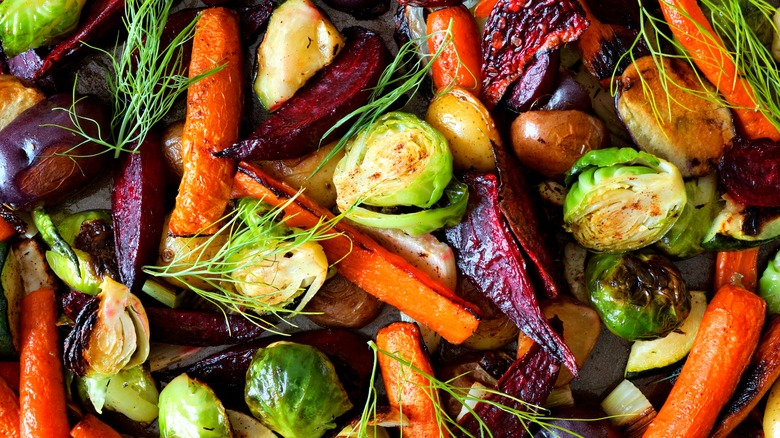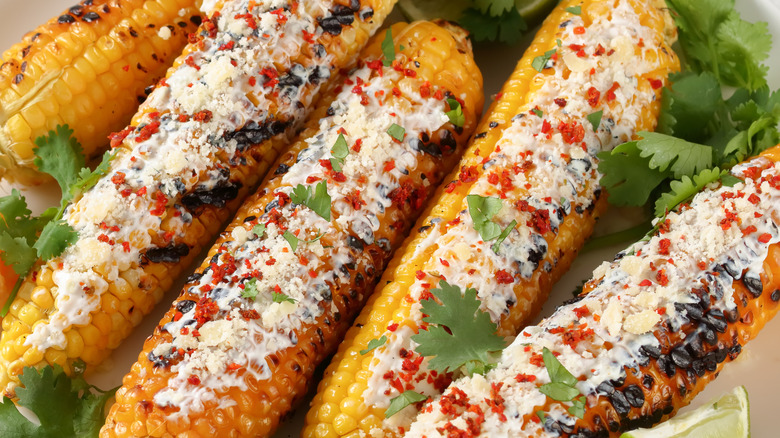The Fail-Proof Ingredient For More Flavorful Roasted Vegetables
Roasted vegetables are always a step up from their steamed or boiled versions, taking on more complex flavors and textures during their stint in a high-temperature oven. While we've made a compelling argument for dry-roasting vegetables, a coating of fat will create a protective layer to seal in moisture while also encouraging a tasty and crispy browned crust. While oil is the standard fat used for roasted vegetables, mayonnaise is the fail-proof ingredient that'll deliver the most flavorful results.
More than just a condiment to spread over sandwiches or stir into salad or creamy coleslaw dressings, mayonnaise is a great roasting vessel. Consisting of both oil and egg yolks, mayonnaise has more flavorful fat than oil alone. Plus, it has a higher smoke point than flavorful fats like butter and olive oil. Tasting Table staff have demonstrated just how well mayonnaise browns and crisps a grilled cheese sandwich, and you can expect the same textural success with your vegetables.
You can add mayonnaise and any additional seasonings like spices and herbs to the raw vegetables in a bowl, mixing to combine. Its thick, creamy consistency will stick to the vegetables for a more even coating; you won't find a puddle of mayonnaise at the bottom of your mixing bowl, which is often the case with oil.
Tips for mayonnaise-roasted vegetables
An agreed-upon ratio of oil to vegetables for most roasted vegetable recipes is a tablespoon or two of oil per pound of vegetables. The swap to mayonnaise requires around double the proportions, so plan on around a quarter of a cup of mayonnaise per pound of roasted vegetables. Just as the mayo sticks easily to vegetables, it'll also help any seasonings you want stick and infuse into your veggies as they roast.
You could even use mayonnaise as both a roasting oil and dredging liquid for breaded roasted vegetable dishes like this eggplant Parmesan recipe. You don't even have to make a wet and dry station; simply coat the veggies in mayo, spread them over a baking sheet, and sprinkle an even layer of bread crumbs, Italian seasonings, and shredded Parmesan before assembling them into a layered casserole.
If you don't have a well-stocked spice and herb cabinet, you can buy flavored mayonnaise to single-handedly season your veggies. For example, you could toss sweet potatoes, corn on the cob, and carrots in chipotle mayo for roasted veggies that are sweet, spicy, and smoky. For an earthy complement to roasted new potatoes, zucchini, garlic, and onions, you can opt for a store-bought mayonnaise made with olive oil. Well-known and artisanal brands of mayonnaise have begun to feature mayonnaise flavors like bacon, roasted garlic, sriracha, and even truffle, opening up many avenues for flavorful roasted vegetables.

